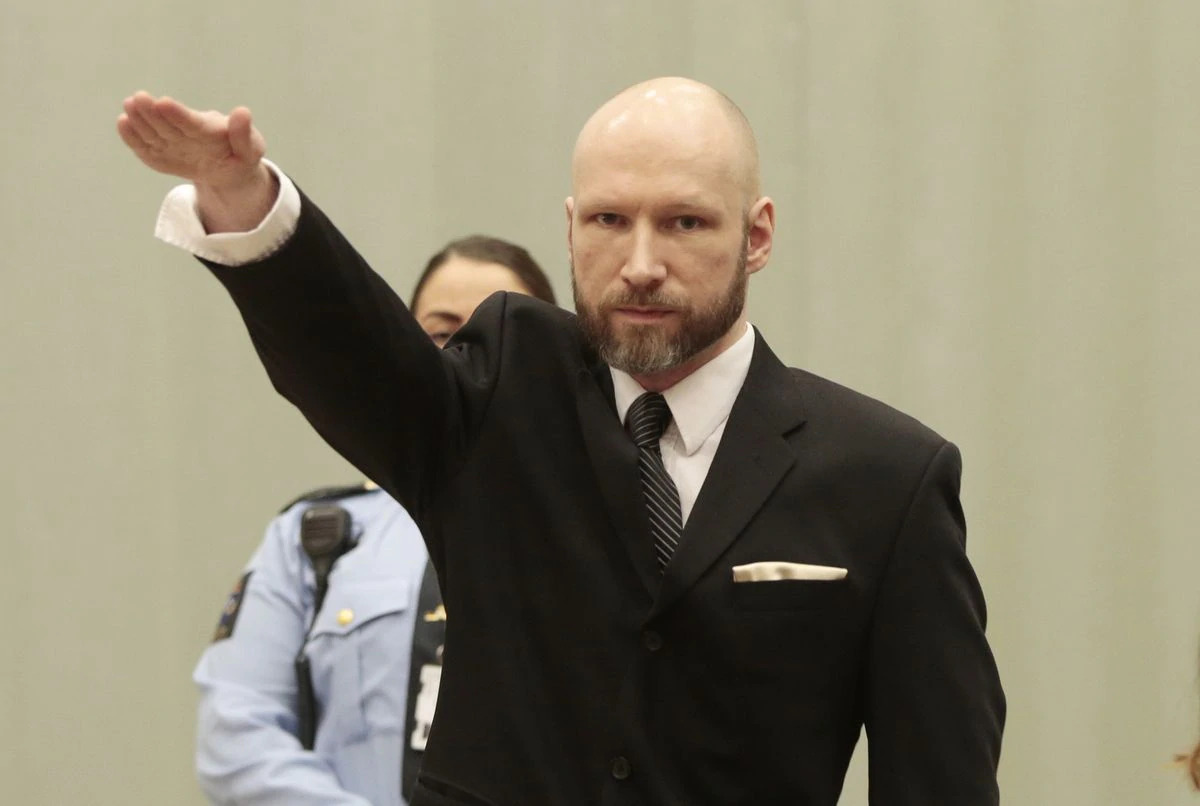White supremacist terrorism has long proven a major threat, but it is likely to see significant changes with a new president in the White House and the end of the COVID-19 crisis in sight. Although U.S. and allied policy will have a considerable impact on the threat white supremacists pose, much will depend on events beyond those governments’ control.
The white supremacist movement has steadily globalized, and this trend continues to accelerate. Believers in the “Great Replacement,” a prominent idea in the white supremacist ecosystem, contend that the United States, Europe, and other “white” countries are being reverse-colonized, with Black, Hispanic, Arab, and other immigrants diluting the white world. The idea emerged in France and has spread among white supremacists around the world.

Globalization goes beyond ideas. Anders Behring Breivik’s 2011 mass murders in Norway created a model of a single man (and yes, it is almost always a man), sending out a manifesto and then going in, arms blazing. Brenton Tarrant in New Zealand put Breivik on steroids when he did the same thing, but posted it to Facebook Live as he killed 51 worshippers at two mosques in New Zealand in 2019.
As Tarrant’s innovation suggests, the movement as a whole is heavily dependent on social media. Part of this is a generational shift, as youth around the world embrace Facebook, YouTube, Instagram, and other media. But social media is also cheap and easily accessible, making it ideal for propaganda and networking. This technological shift, however, has made the movement more diffuse, weakening what little hierarchies existed while connecting previously isolated individuals. Fortunately, social media and financial services companies are more willing to deplatform white supremacists, but many experts contend more could be done.
Many of the most dangerous white supremacists are individuals with no formal connection to a known group but who are avid consumers of propaganda on social media or otherwise engaged in the movement as a whole. In addition to Breivik and Tarrant, individuals without ties to groups have committed the deadliest attacks in the United States in recent years, notably Robert Bowers’ killing of 11 worshipers at Tree of Life synagogue in Pittsburgh in 2018 and Patrick Crusius’ attack on an El Paso Walmart in 2019, which killed 22.
As the targets of these killers suggest, the white supremacist agenda is incredibly diffuse — a weakness as well as a danger. The bad news is that white supremacists target not only traditional enemies like Jews and Blacks, but also Muslims, Hispanics, leftists, the LGBTQ+ community, and other supposed enemies of whites — few are safe. The white supremacist agenda has also bled over into a broader anti-government agenda embraced by militias and movements like the boogaloo bois, creating a mix of individuals and small groups that overlap but seldom match: Some white supremacists are also anti-government and vice-versa, but there are many anti-government groups that share little or none of the white supremacist agenda. In addition to hindering groups from getting a critical mass of supporters, this diffusion increases divisions within the movement and creates a coalition of minority groups, each with a vested interest in stopping white supremacists.
The end of the Trump presidency raises many additional questions about the future of the white supremacist movement. Although the FBI and Department of Homeland Security increased their focus on white supremacists during Trump’s time in office, his administration’s obsession with less dangerous movements like antifa often inhibited a comprehensive effort against white supremacists. Under Trump, as one former senior FBI noted: “There’s some reluctance among agents to bring forth an investigation that targets what the president perceives as his base. It’s a no-win situation for the FBI agent or supervisor.” Even some of Trump’s senior advisors criticized the president for not denouncing white supremacists.
Yet Trump’s perceived support allowed white supremacists to believe they had an ally in government, perhaps reducing their inclination to use violence. Studies of violence in Europe showed that countries without strong anti-immigrant parties often had more anti-immigrant violence: The lack of a mainstream outlet allowed radical groups to capitalize on broader anger.
White supremacists, like other violent movements, are highly sensitive to U.S. government counterterrorism. President-elect Joe Biden has already made clear that he rejects white supremacist groups, and the Capitol insurrection will make this even more of a priority. If his administration moves against violent members more aggressively, it could greatly reduce the risk they pose. Given the global nature of the movement, it is necessary for the United States to work with its allies around the world to prevent groups and cells from helping each other, an approach the United States has done successfully against jihadist organizations, although the specifics will be different in practice. Designating more white supremacist organizations active overseas as terrorist groups would be another useful step.
Finally, the zeitgeist may also change. Allowing more Muslim immigration, imposing COVID-19 restrictions, and other policy changes are likely to affect which issues — and which enemies — white supremacists prioritize. A widespread sense, encouraged by President Trump, that the 2020 election results are illegitimate may lead to an even greater anti-government focus (or perhaps anger against Hispanics and Blacks who “illegally” voted) even after the election is behind America. As new crises emerge, we should expect the white supremacist movement to shift with it.
Daniel L. Byman – Brookings






